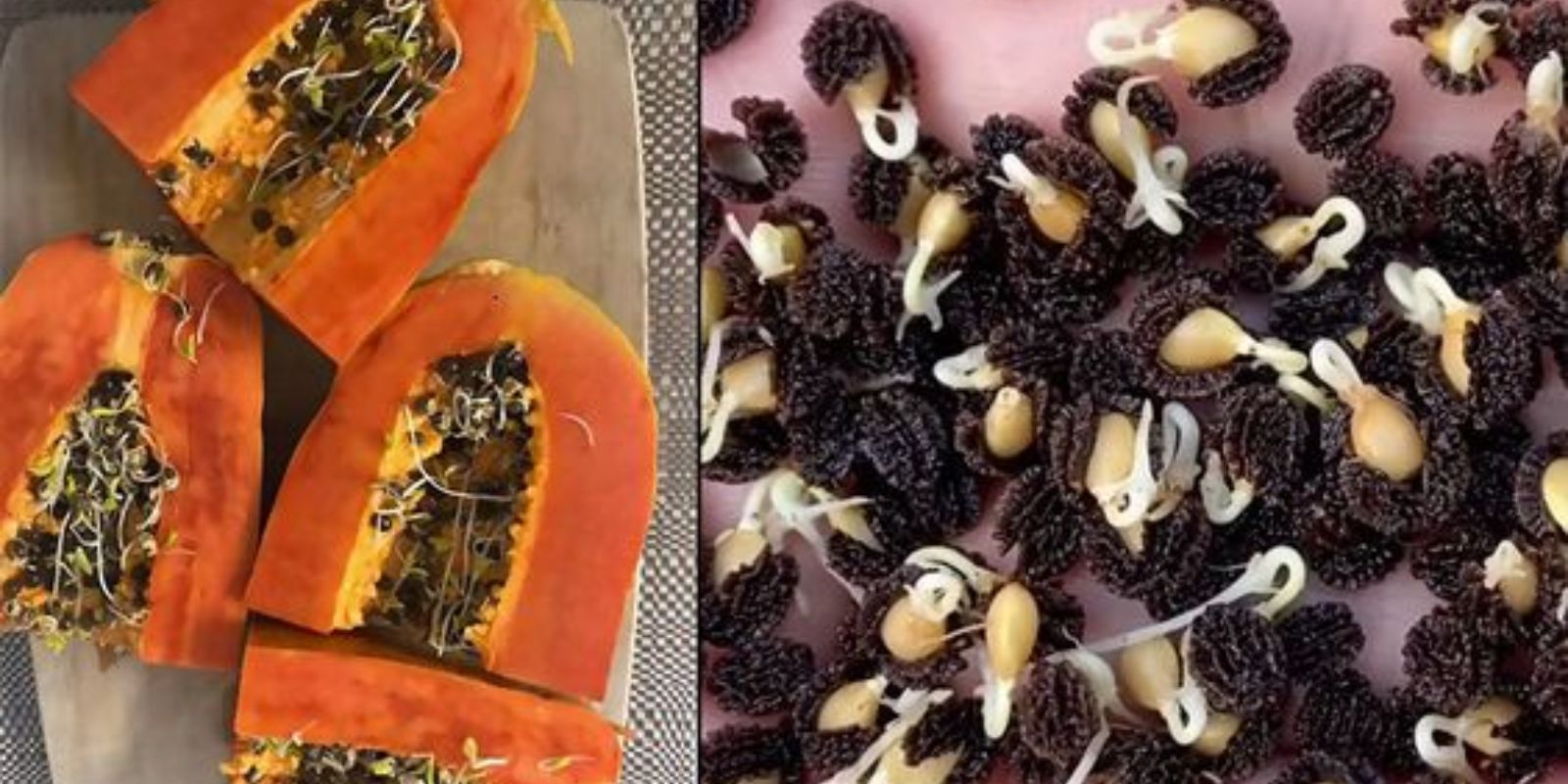Growing papaya at home is not just a dream for tropical gardeners. With the right approach, you can cultivate this delicious fruit even in smaller spaces, like balconies or patios, using pots. Papaya trees are known for their fast growth and sweet, nutritious fruit, making them an attractive choice for home gardening enthusiasts. This article will guide you through the steps to successfully grow papaya in pots, ensuring you enjoy an abundant harvest right from your own home.
Why Grow Papaya in Pots?
Papaya, a tropical fruit renowned for its sweet taste and health benefits, can thrive in pots, making it an excellent option for those with limited space. Growing papaya in containers offers several advantages:
- Space Efficiency: Ideal for urban environments or small gardens where ground space is limited.
- Mobility: Pots can be moved to take advantage of optimal sunlight and protect the plant from harsh weather conditions.
- Control: Easier to manage soil quality and water drainage, reducing the risk of diseases and pests.
Choosing the Right Pot
Selecting the appropriate pot is crucial for successful papaya cultivation. Follow these guidelines:
- Size: Choose a large pot with a diameter of at least 18-24 inches. Papaya plants have extensive root systems, and a larger pot allows for healthy root growth and stability.
- Material: Opt for pots made from materials that provide good drainage, such as clay, ceramic, or plastic. Ensure the pot has drainage holes at the bottom to prevent waterlogging, which can lead to root rot.
Preparing the Soil
The quality of soil in your pot significantly impacts the health and productivity of your papaya plant. Use the following tips to prepare the ideal soil mix:
- Well-Draining Mix: Papayas prefer well-draining soil that retains moisture but does not become waterlogged. A mix of potting soil, compost, and perlite or sand works well.
- Organic Matter: Enrich the soil with organic matter, such as compost or aged manure, to provide essential nutrients and improve soil structure.
Planting Papaya Seeds
Planting papaya seeds is straightforward but requires attention to detail to ensure successful germination and growth:
- Seed Selection: Use fresh papaya seeds from a ripe fruit. Older seeds may have reduced germination rates.
- Sowing: Sow seeds about 1 inch deep into the soil. Space the seeds 1-2 inches apart to allow room for seedling development.
- Moisture: Keep the soil consistently moist but not waterlogged. Water gently to avoid displacing the seeds.
Providing Sunlight
Papaya plants require ample sunlight to thrive. Here’s how to ensure they get enough light:
- Sun Exposure: Place the pot in a location where the plant will receive at least 6-8 hours of direct sunlight daily. Papayas are sun-loving plants and need plenty of light to grow and produce fruit.
- Indoor Options: If growing indoors, use grow lights to supplement natural light, ensuring the plant gets enough exposure.
Watering and Fertilizing
Proper watering and fertilizing are key to a healthy, productive papaya plant:
- Watering: Keep the soil consistently moist, but avoid overwatering. Allow the top inch of soil to dry out between waterings. Papayas need regular moisture but are sensitive to waterlogged conditions.
- Fertilizing: Feed the plant with a balanced, water-soluble fertilizer every 4-6 weeks. Choose a fertilizer high in potassium to support fruit development. Follow the manufacturer’s instructions for application rates.
Pruning and Maintenance
Regular pruning and maintenance help manage plant size, shape, and health:
- Pruning: Trim excess growth to maintain the plant’s shape and improve air circulation. Remove any dead or damaged leaves to prevent disease.
- Support: Provide support for the plant as it grows, especially if the pot is small. Use stakes or cages to keep the plant upright and prevent it from toppling over.
Managing Pests and Diseases
Even in pots, papaya plants can be susceptible to pests and diseases. Here’s how to manage them:
- Pests: Common pests include aphids, spider mites, and whiteflies. Monitor your plant regularly for signs of infestation and treat with organic insecticidal soap or neem oil if needed.
- Diseases: Watch for symptoms of fungal infections, such as powdery mildew or root rot. Ensure good airflow around the plant and avoid overwatering to prevent disease. Remove any affected plant parts immediately.
Harvesting Papayas
Papayas generally take 6-12 months to mature, depending on growing conditions and the variety:
- Ripeness: Harvest papayas when they are fully colored and slightly soft to the touch. The fruit should have turned from green to yellow or orange, depending on the variety.
- Handling: Cut the fruit from the plant using a sharp knife or pruning shears. Handle the fruit gently to avoid bruising.
Tips for Success
- Temperature: Papayas thrive in warm temperatures. Protect the plant from frost and cold drafts, especially if growing in cooler climates.
- Repotting: As the plant grows, you may need to repot it into a larger container to accommodate its expanding root system.
- Pollination: In containers, ensure adequate pollination. If needed, hand-pollinate flowers with a small brush to transfer pollen between male and female flowers.
Conclusion
Growing papaya in pots is a rewarding endeavor that allows you to enjoy fresh, homegrown fruit even with limited space. By choosing the right pot, preparing quality soil, and following proper planting, watering, and pruning techniques, you can cultivate a healthy papaya plant that produces an abundant harvest. With a bit of care and attention, your home garden can become a tropical oasis, providing you with delicious papayas right from your patio or balcony. Happy gardening! 🌴🍍

